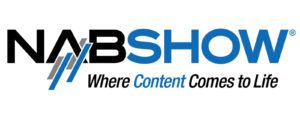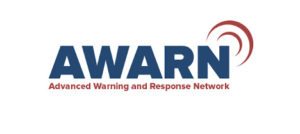- About
- Members
- Sponsors
- Subcommittees
- Technical Documents
- News
- Events
- Spotlight ATSC 3.0
- Contact Us
- Member Login
- Member Meetings
- Advanced Search
Search Site
Member Links
- About
- Members
- Sponsors
- Subcommittees
- Technical Documents
- News
- Events
- Spotlight ATSC 3.0
- Contact Us
- Member Login
- Member Meetings
- Advanced Search
CHAT ROOM: Where Content Comes to Life
Posted on April 3, 2017 in ATSC News

In the Chat Room this month, THE STANDARD sat down with Sam Matheny, Executive VP and CTO at the National Association of Broadcasters and head of the NAB’s “PILOT” innovation initiative. Along with his passions for scuba diving and duck hunting, he’s a Next Gen TV guru and zealous advocate for ATSC 3.0
THE STANDARD: The NAB Show is right around the corner. Sam, what major Next Gen TV developments since last year’s show do you expect to see in Las Vegas?
MATHENY: What a difference a year makes! Since last year’s show, we’ve seen ATSC complete virtually all of the 3.0 standard. What this does is that it allows manufacturers to start real product designs. There’s now an active proceeding going on at the FCC to permit ATSC 3.0 broadcasts in the U.S. And ATSC 3.0 service is launching in Korea this spring. So ATSC 3.0 is much more “real” at the show this year.

There will be multiple live OTA (over-the-air) broadcasts, and attendees will see brilliant UHD video combined with sophisticated, yet intuitive, interactive applications. I think you’ll also see that new “realness” reflected in the exhibits, in the conferences and in the hallway conversations. At this year’s show, we’ll be witnessing the beginning of the transition from technology and prototypes to products and services.
THE STANDARD: Advanced Emergency Alerting is one of the ATSC 3.0 standard’s key capabilities. How have the NAB and its members been working on this important ingredient?
MATHENY: Providing fast and factual information in times of disaster or emergency is what makes broadcasters such valuable first-informers. Next Gen TV broadcasting enhances this capability in a significant way with advanced emergency alerting.
We’ve been working on this in a couple of ways. First, our advanced technology VP, So Vang, has been leading our efforts within ATSC to build out the interactive content capabilities of the ATSC 3.0 standard. This spans specifying the language of the standard to building and testing prototype hardware and sample software. This foundational work enables lots of applications, and it’s fundamental to advanced alerting.

And, we’ve been collaborating with the AWARN Alliance on building and designing emergency alerting demonstrations. AWARN (the Advanced Warning and Response Network) is a fantastic partner; they have strong relationships with the first-responder community, like for instance the National Center for Missing and Exploited Children (NCMEC).
We invite everyone to visit our PILOT booth in the NAB Futures Park to experience next-gen emergency alerting enabled by ATSC 3.0. Our prototype PILOT Home Gateway will feature multiple demonstrations, including an Amber Alert created in concert with NCMEC and a hazardous materials scenario – both based on our work with the AWARN Alliance.
THE STANDARD: How does the NAB’s PILOT initiative fit with ATSC 3.0’s technologies and services?
MATHENY: PILOT is a vehicle to advance broadcasting technologies and cultivate new- media opportunities. For ATSC 3.0, PILOT projects will help test the standard’s basic performance and advanced features, support events and public demonstrations to spur understanding at the technical and the non-technical executive level, and contribute to the innovation process in exploiting future capabilities of the standard. Our NAB Futures Park at the show is “Powered by PILOT,” and that’s where attendees can see some of the latest developments in Next Gen TV.

One of PILOT’s major projects is the prototype ATSC 3.0 “Home Gateway. “ A primary goal of the PILOT Gateway is to accelerate deployment of ATSC 3.0 standards by providing a platform for real-world development and implementation of interactive data applications. It gives the industry a platform for testing what’s been written in the standard. Through our prototyping process, we’re able to verify, validate and provide feedback to the ATSC specification development teams. Also, because the PILOT Gateway leverages 3.0 interactive content specifications, we’re able to develop and demonstrate next-gen services such as targeted content, advanced alerting, HTML5 applications, audience engagement, and so on.
It’s exciting to note that at this year’s show the PILOT Home Gateway will be receiving and displaying broadcast OTA UHD content along with interactive and Internet-based applications. This is the true combination of broadcast and broadband, a major goal of 3.0. The advantages of the IP architecture will be on full display at this year’s NAB Show.
Posted in ATSC News
News Categories
News Archives
Subscribe
Subscribe to The Standard, our monthly newsletter. Learn More
Join ATSC
ATSC is a membership organization with both voting and observer categories. Voting members include corporations, nonprofit organizations, and government entities, and they participate actively in the work of ATSC. Observers are individuals or entities not eligible to be a voting member.
Subscribe to our Newsletter
Subscribe to The Standard, our monthly newsletter, to stay up-to-date with ATSC news and events around the world.
Site Links
Contact Us
Advanced Television Systems Committee, Inc.
1300 I Street NW, Suite 400E
Washington, DC 20005
Do you have questions about ATSC?
About ATSC
The Advanced Television Systems Committee, Inc., is an international, non-profit organization developing voluntary standards and recommended practices for digital terrestrial broadcasting. ATSC member organizations represent the broadcast, broadcast equipment, motion picture, consumer electronics, computer, cable, satellite, and semiconductor industries. ATSC also develops digital terrestrial broadcasting implementation strategies and supports educational activities on ATSC standards.
© 2025 ATSC







































